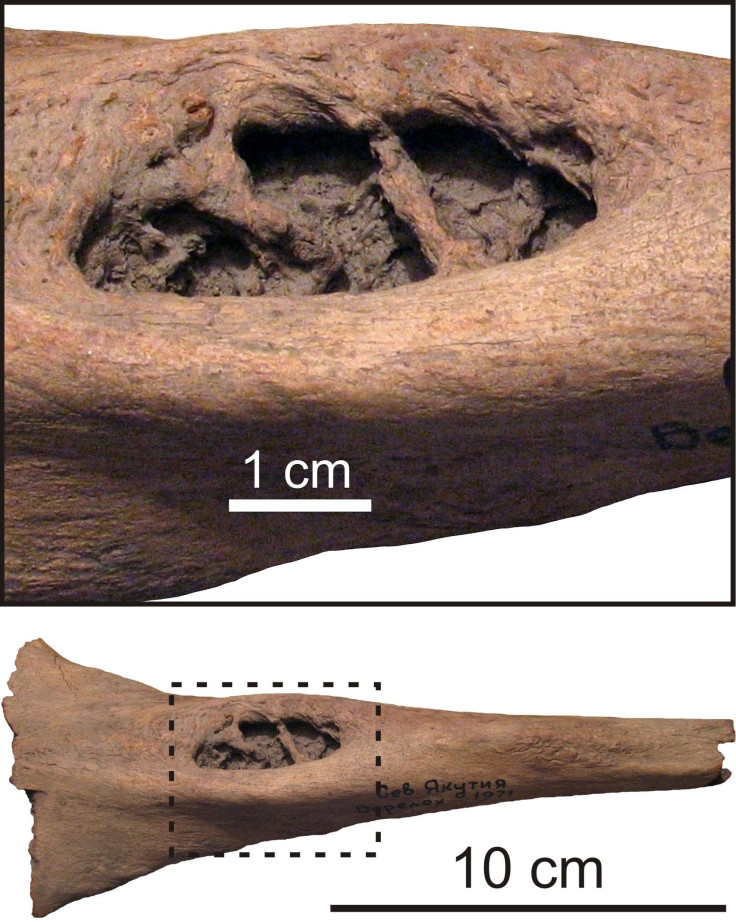Woolly Mammoths Had Osteoporosis: Fossils Show Bone Diseases Common Before Extinction

Humans and mammoths have a lot in common, including diseases.
Scientists have found evidence woolly mammoths suffered from bone problems similar to what humans experience today, a study in Quaternary International found. And the bone diseases, such as osteoporosis and osteofibrosis, were common among the extinct mammals — appearing in almost half of the samples from the enormous species.
Read: How Evolution Killed Woolly Mammoths (It Was Devastating)
One of the bone conditions, referred to as “rice grain,” is “a fragment of bone or cartilaginous tissue that is located freely in the joint cavity,” Tomsk State University said in a statement about the research. Like it does in people, that would cause severe pain and restrict the animal’s movement, making it “an easy target for predators.”
The bone destruction, and thus the species’ extinction, is probably related to “mineral starvation” — a deficiency that would lead to a metabolic disorder.
Author Sergey Leshchinskiy, a paleontologist at TSU, analyzed the remains of more than 1,500 mammoths 12,000 to 13,000 years old, the study said. They came from the Berelyokh site in Russia’s Siberia, and the researcher wrote that the site “reflects the terminal stage of the last mass extinction of large mammals.”
Bone diseases were probably not the only issue these late mammoths would have had — evolution was not kind to this famously tragic species. Recent research has shown that the last woolly mammoths on Earth had probably lost their sense of smell, had an irritated stomach and had translucent hair. The information came from comparing the genes of mammoths that lived during the species’ peak to genes of mammoths during their final years. There were so few mammoths toward the end that they would have become inbred, helplessly passing on bad genes. The hair would have been the most visible change, as woolly mammoths were known for stiff coats that protected them from the elements. But toward the end, they would have had fur like satin.
See also:
Two Extinct Reptiles Are Actually the Same Thing
Scientists Use Skull and Bones to Recreate Ancient Woman’s Face
© Copyright IBTimes 2024. All rights reserved.





















